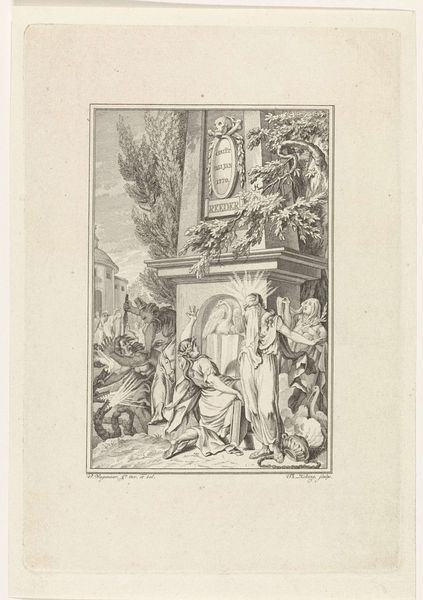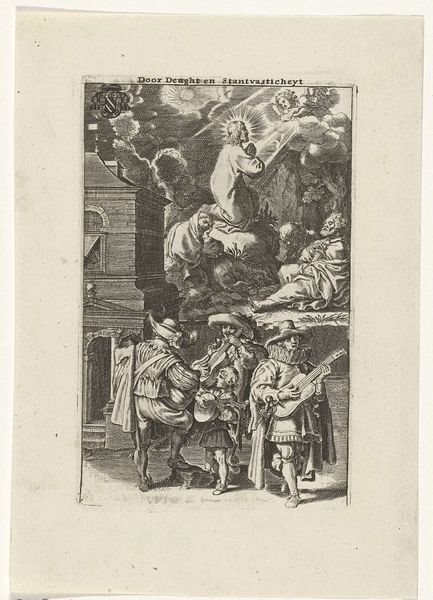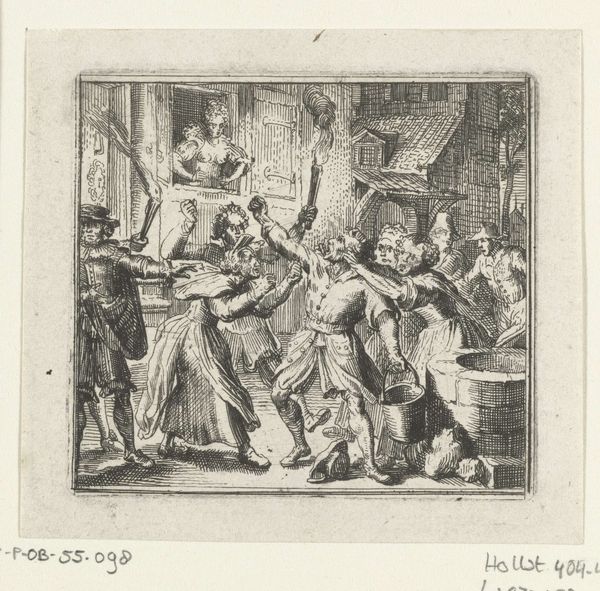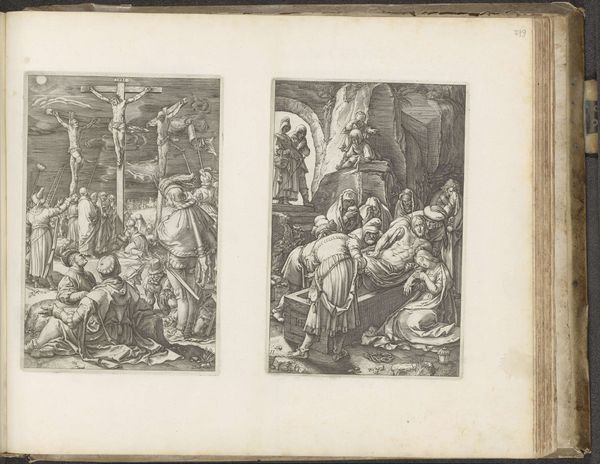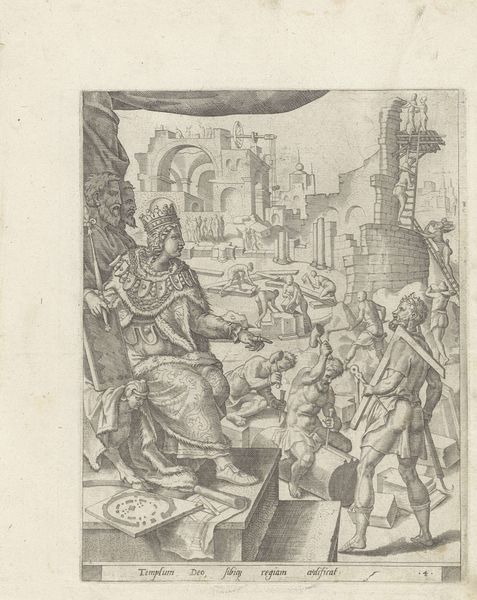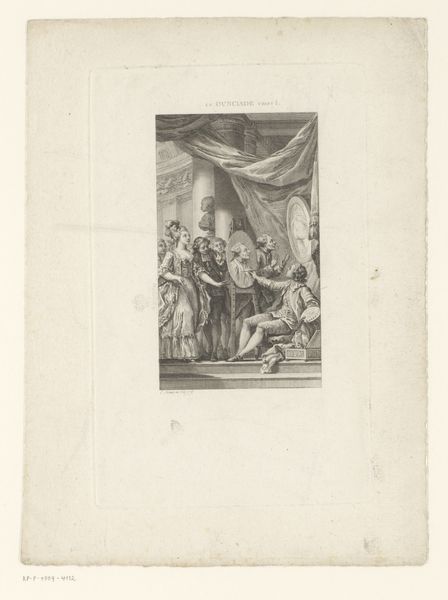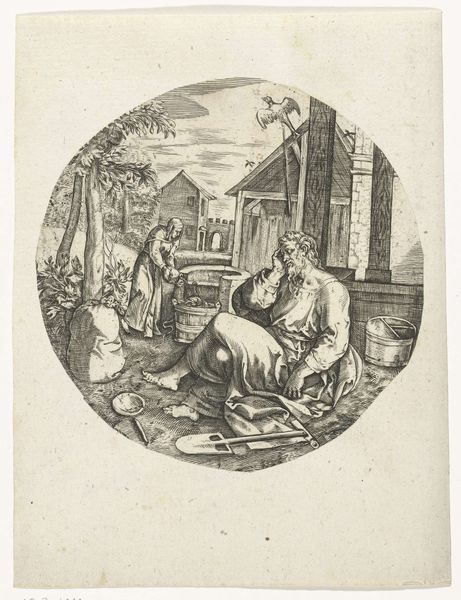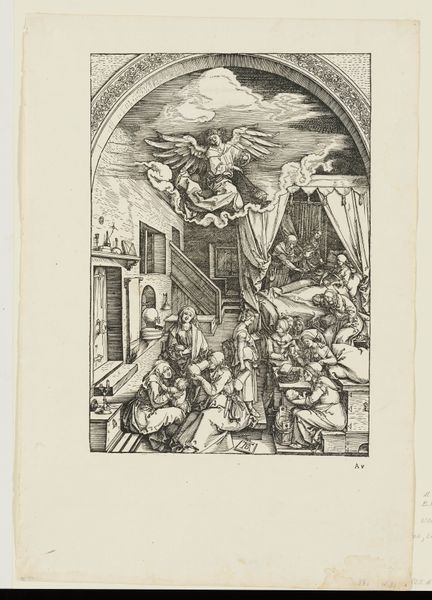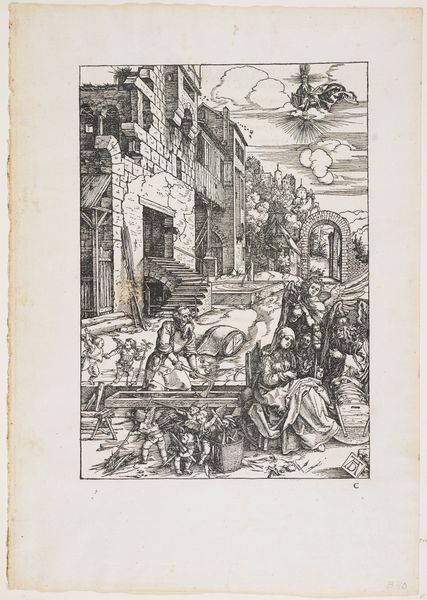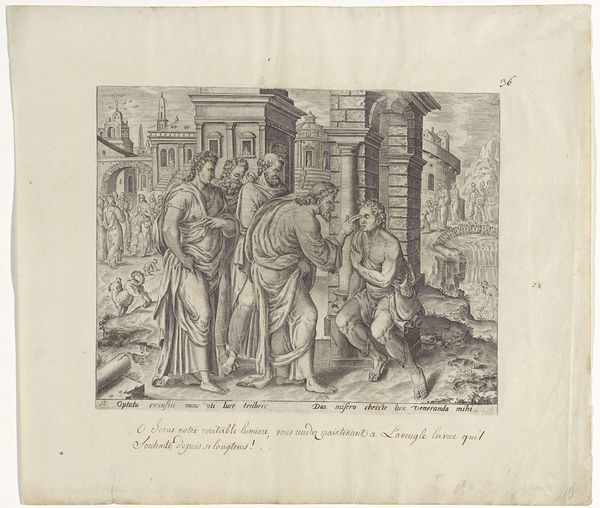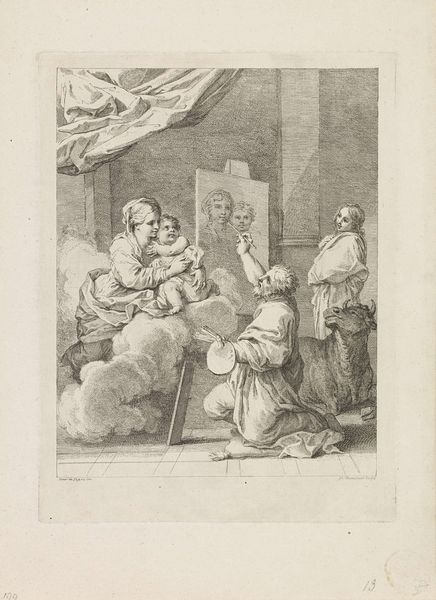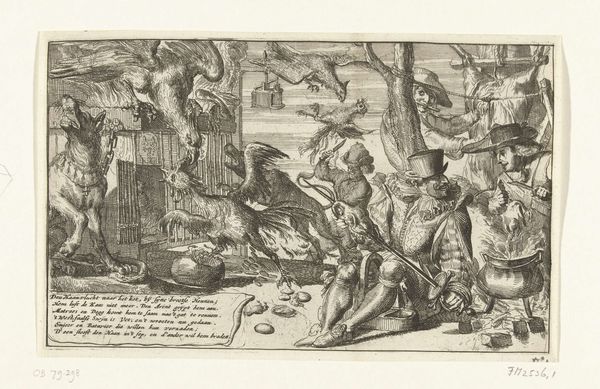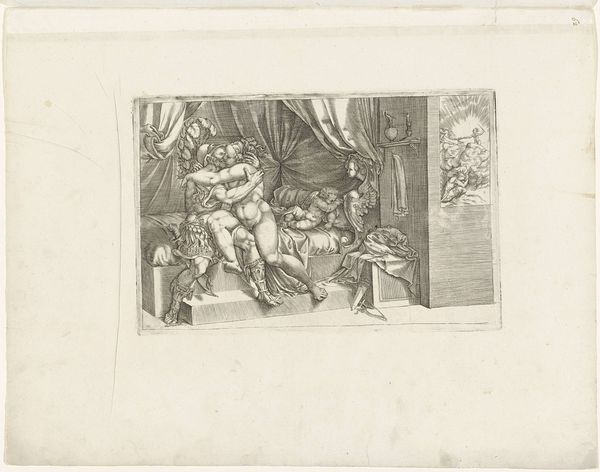
#
aged paper
#
toned paper
#
light pencil work
#
pencil sketch
#
old engraving style
#
personal sketchbook
#
pen-ink sketch
#
sketchbook drawing
#
pencil work
#
sketchbook art
Dimensions: height 125 mm, width 70 mm
Copyright: Rijks Museum: Open Domain
Editor: Here we have "Boekverbranding," created by Romeyn de Hooghe between 1650 and 1708. It appears to be a pen-ink sketch. The scene is quite striking, quite ominous, depicting a public burning of books. What draws your eye when you look at this, from a formalist perspective? Curator: Formally, my attention is directed by the artist's use of linear perspective, anchoring the architectural elements in the background. Notice how de Hooghe uses line weight to suggest depth, creating a recessive effect? Editor: Yes, the background does seem to fade a bit, creating space. How does that recession affect the overall meaning, given the harsh subject matter? Curator: The sharpness of line in the foreground emphasizes the book burning itself. Observe the figures—the linear precision describes their garments, distinguishing them with a coldness. The burning itself disrupts this rigidity; consider how that textural contrast invites a certain visceral reading. Does the flame serve a structuring function? Editor: I see, it almost creates a focal point due to the looser lines. Would a formalist interpretation typically avoid delving into any political implications implied by the burning? Curator: Not necessarily, it is about examining how those implications are manifested *within* the artwork's formal qualities, or, say, how a formal reading elucidates a possible cultural function. So the focus remains the relationship between parts to a whole; the how not the why. Editor: That distinction is becoming clearer to me. Seeing how de Hooghe uses lines and perspective shifts my attention to elements I previously overlooked. Curator: Indeed, attending to the artwork's own internal structuring—that is, its formal properties—helps unlock potential.
Comments
No comments
Be the first to comment and join the conversation on the ultimate creative platform.
